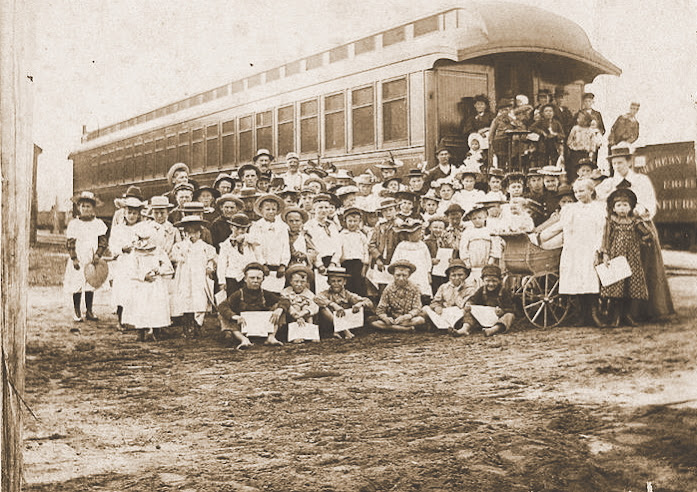My post this month is an announcement of my early September release that hasn’t had its day in the sun. With this story set in 1878, I wanted to play with several tropes: secret identity, opposites attract, mistaken identity, woman in jeopardy, across the tracks and figure out how to fit them all in one heartwarming story. Of course, including children in the plot always helps with the cuteness factor.
I always do the research to find the actual train schedules so I can figure out if my characters have lots of choices of departures or if they have to jump through hoops to get to the depot in time. In this instance, I needed the names of several stops before the train reached Denver, and I was lucky to find such a schedule. I have used the website for the Central Pacific Railroad Photographic History Museum so many times that I feel I must give it a shout out. http://cprr.org. Click on the History link and you’ll find pictures of what the inside of a car looked like, how the beds folded down, tons of stuff about the Transcontinental Railroad construction and completion, testimonies of people who rode on the first trains, recommendations on how to pack and what people would expect to see, the actual advertisements that enticed people to travel cross-country, including side trips to new attractions like Yellowstone and Yosemite Parks. In the mid-19th century, trips were either coast also included ship connections to other continents. If any of you have train enthusiasts in your family, I can’t say enough about this website.
The title is Sabrina, and the novella is book 5 in the Runaway Brides of the West multi-author series. Sabrina Whitmore, daughter of a wealthy railroad investor, has finally found a man who accepts her suffragist work. On the night before her wedding, she overhears her fiancé bragging that if he can’t get her to toe the line after their marriage, he’ll just have her committed to an asylum and take charge of her inheritance. Sabrina escapes the family mansion with her maid and rushes to the Kansas City train station headed toward an aunt in Denver. When she awakens the morning before her arrival, she discovers her maid is nowhere to be found and has stolen her clothes and most of her money. While hunting for her maid, she sees Maeve spirited away by two burly men and is scared her fiancé is hunting her.
Derrick Burkhardt bumps into a woman matching the description of the governess he hired from a St. Louis agency. Needing to get her settled at the ranch before he leaves for the spring roundup, he does all the talking during the buggy ride. When he returns a week later, the ranch is in an uproar over the governess’s unorthodox teaching methods. All Derrick sees are his children at the happiest they’ve been in two years. Will he feel the same when he learns the governess is not who she claims to be?
FREE in Kindle Unlimited
https://www.amazon.com/gp/product/B0B33ZYMY8
Best ways to contact Linda
https://www.facebook.com/linda.carrollbradd
http://www.goodreads.com/author/show/1806413.Linda_Carroll_Bradd
https://www.bookbub.com/authors/linda-carroll-bradd
https://www.amazon.com/author/lindacarroll-bradd














.png)


























